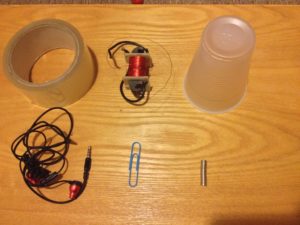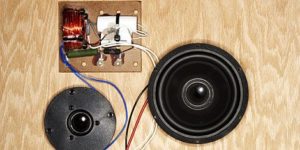Speakers create sound by turning electrical power into the sound effect by utilizing magnetism to “force” air through it at a specific wavelength via the dome of the loudspeaker. While whole volumes have been written about these phenomena, making your inexpensive speakers requires just a basic understanding of production effects. In this, you will learn about how to make speaker at home.
Read on to discover how to construct your homemade speakers, whether you’d like to spend several days constructing the very next good sound equipment or simply want to have a better understanding of speaker systems.
Methods on how to make speaker at home by following some simple steps.
Method 1: Creating a Simple Speaker
Copper cable, packaging tape, and a powerful magnet are all things you’ll need. Although greater end speakers require a great deal of calibration, the technological development is rather simple. A system is connected to an electromagnet and an electrical charge is sent through it. The magnet vibrates as a result of the current, as well as the oscillations are taken up by human ears as noise.
- You should perhaps acquire a tiny plastic Tupperware and cup to hear the music. This will magnify the audio in the same way that shouting into a cone does.
- To form a coil, wind the copper cable all-around magnet multiple times. Starting at the center of the wire, loop it 6-7 times. Ensure that many feet of wires are left unwrapped on both sides of the electromagnet. Remove the magnet from the coil and tape that one to the inside of the Tupperware.
- Make a bigger coil with a bottle cap or some other spherical item. Make an even larger coil and use both sides of the remaining copper cable and tape it on over both the shorter ones. You’ll leave about an inch of extra wire on either end of the curve, just as previously, to connect your “loudspeaker” to your audio source.
- Position the magnets above the magnetic coupling. It should be pleasant between both coils, but just don’t stress about contacting every piece of wire.
- Connect the two copper cables to a frequency range. A 1/8th inch connection, often known as an “Optional accessory” cord, is perhaps the most frequent connection. Wrapping one end of the rope from around the head and another around the base of the steel input.
Trying to attach a copper cable to an audio input is easy with gator clips, which have been tiny clamps that carry electricity.
- Play around with the speakers to improve the sound quality. Use a stronger magnet; tighten your coils, experiment with different “audio systems,” and experiment with different audio sources at varying levels.
Making Large Loudspeakers (Method 2)
Having knowledge on how to make speaker at home, made me recognize the elements that make up a speaker. Whereas the fundamentals of speaker engineering haven’t changed much since 1924, audio engineers have been refining loudspeaker design, circuitry, and performance ever since. All loudspeakers, however, have a few fundamental components:
Drivers available in a multitude of forms and sizes, however, they all have the same purpose: to produce noise. Numerous drivers are used in many loudspeakers to accommodate a wide range of wavelengths. “Woofers,” besides instance, are huge drivers that excel at close to zero sounds like bassline, and “Twitter users” handle high-frequency sound.
Crossovers: Such tiny relays isolate bass, high, and semi frequencies by breaking down complicated electrical impulses into smaller components and sending them to various drivers.
The circuitry is contained in the cabinets, which is the outer covering of a loudspeaker. They are manufactured in several forms, sizes, and substances to minimize noise “resonance” or even to increase volume.
FAQs
Q1. Is it less expensive to make your speakers?
ANS1. It might be less expensive to construct the speakers, and then you will most likely want to purchase the receiver. Choose from the kits then construct five or seven speakers. Then perhaps a subwoofer is required… You could save even more money if the price is greater.
Q2. Which materials are utilized in the construction of a speaker?
ANS2. Document, metal, plastics, and aramid fiber are all common materials for loudspeaker cones. Every one of those materials has its distinct acoustic qualities, advantages, and downsides.
Q3. What was the finest material for sound amplification?
ANS3. The flexibility of “springiness” of materials is also essential for sound transmission: less brittle materials, including rigid foams like newspaper, are much more prone to retain sound rather than transfer it. Some alloys, including aluminum, and hard solids, also including diamond, are the finest material for transporting sound waves.
Q4. Is it true that speakers are composed of paper?
ANS4. A ceramics ferrite substance made up of iron, magnesium, as well as ceramic binders makes up the magnetic core. The cone, surrounding, and spiders are all created from treated paper that has been glued together. The speaking coil is made out of a polymer bobbin wrapped in fine gauge insulated wire.
Also, check out 6 Best Cough Syrup in India to know more.








